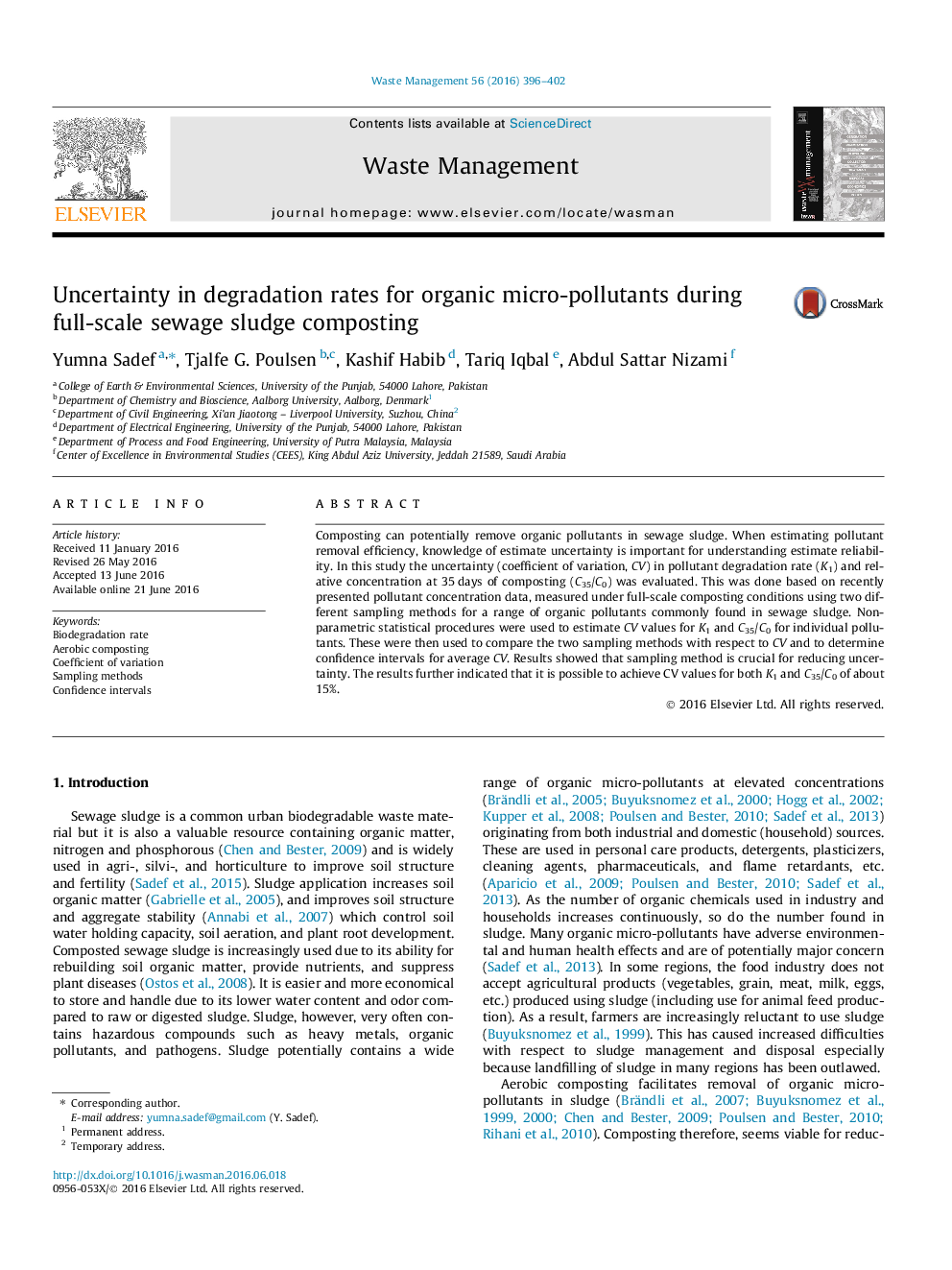| Article ID | Journal | Published Year | Pages | File Type |
|---|---|---|---|---|
| 4471149 | Waste Management | 2016 | 7 Pages |
•Uncertainty in organic pollutant degradation rates during full-scale composting was quantified.•Uncertainty estimates were quantified for two different compost sampling methods and treatments.•Particle size reduction and material homogenization were crucial for reducing uncertainty.•An average uncertainty (coefficient of variation) as low as 15% could be achieved.
Composting can potentially remove organic pollutants in sewage sludge. When estimating pollutant removal efficiency, knowledge of estimate uncertainty is important for understanding estimate reliability. In this study the uncertainty (coefficient of variation, CV) in pollutant degradation rate (K1) and relative concentration at 35 days of composting (C35/C0) was evaluated. This was done based on recently presented pollutant concentration data, measured under full-scale composting conditions using two different sampling methods for a range of organic pollutants commonly found in sewage sludge. Non-parametric statistical procedures were used to estimate CV values for K1 and C35/C0 for individual pollutants. These were then used to compare the two sampling methods with respect to CV and to determine confidence intervals for average CV. Results showed that sampling method is crucial for reducing uncertainty. The results further indicated that it is possible to achieve CV values for both K1 and C35/C0 of about 15%.
